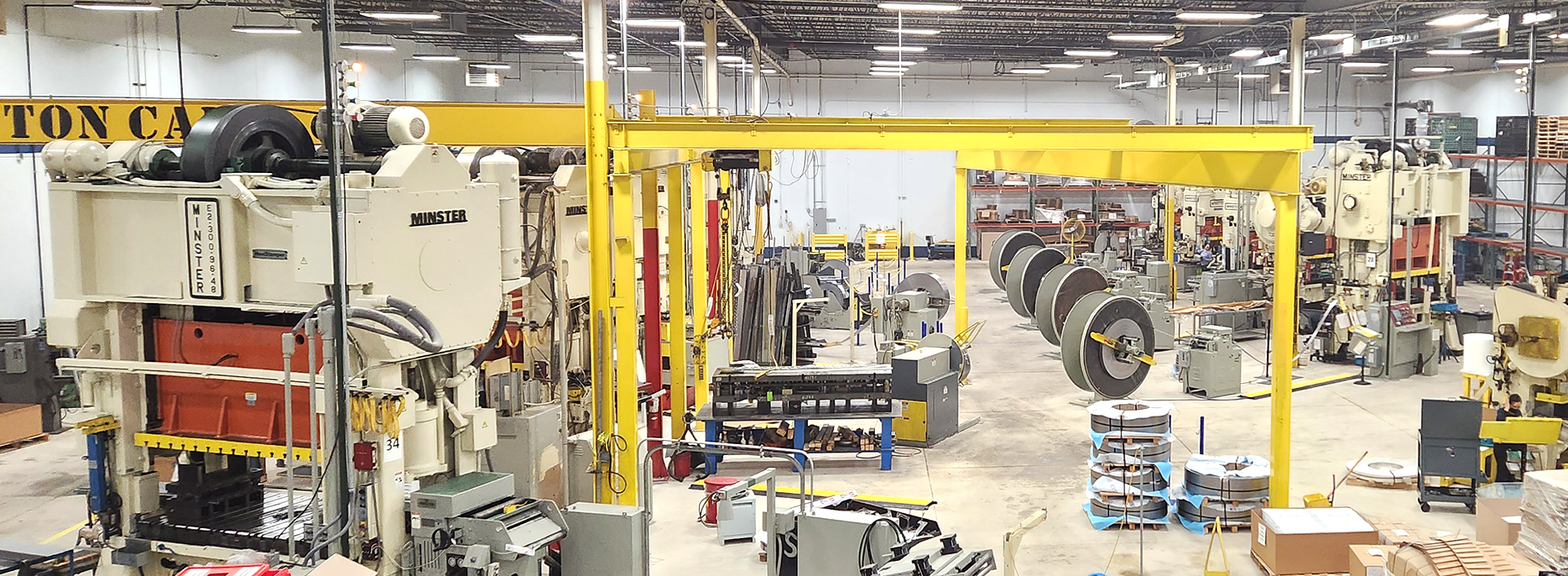The sheet metal fabrication industry is undergoing a significant transformation, driven by technological advancements, evolving customer demands, and increasing focus on sustainability. The key trends shaping the industry are:
Digitalization and Automation
- Digital Thread: The integration of CAD/CAM software, cloud-based platforms, IoT-connected machinery, and data analytics is creating a seamless digital thread from design to production. This enables real-time monitoring, optimized workflows, and improved decision-making.
- Robotics and Automation: Robots are increasingly deployed for tasks like welding, bending, cutting, and material handling, boosting productivity, consistency, and safety, especially for repetitive or complex operations. Automated systems are also streamlining material handling and storage.
- Smart Factories: The concept of the “smart factory” is gaining traction, where interconnected machines and systems communicate and optimize processes autonomously, leading to greater efficiency and flexibility.
Advanced Manufacturing Technologies
- Additive Manufacturing (3D Printing): While not replacing traditional sheet metal processes, 3D printing is playing a crucial role in prototyping, tooling fabrication, and creating complex geometries that are difficult or impossible to achieve with conventional methods. Hybrid manufacturing, combining additive and subtractive processes, is also emerging.
- Laser Cutting and Fiber Lasers: Laser cutting, particularly fiber laser technology, offers high precision, speed, and versatility for cutting sheet metal. Fiber lasers are becoming increasingly popular due to their higher efficiency and lower maintenance costs.
- Advanced Forming Techniques: Techniques like hydroforming and incremental sheet forming are gaining wider adoption for producing complex shapes with improved accuracy and reduced tooling costs.
Customization and Small-Batch Production
- Mass Customization: Enabled by digital technologies and flexible manufacturing systems, the industry is moving towards mass customization, allowing manufacturers to offer highly personalized products tailored to individual customer needs.
- Agile Manufacturing: The ability to quickly adapt to changing demands and produce smaller batches efficiently is becoming crucial. This requires flexible equipment, streamlined workflows, and responsive supply chains.
Sustainability and Resource Efficiency
- Circular Economy: Emphasis on material recycling, waste reduction, and closed-loop manufacturing processes to minimize environmental impact.
- Energy Efficiency: Adoption of energy-efficient machinery, optimization of production processes, and use of renewable energy sources to reduce carbon footprint.
- Sustainable Materials: Exploration and use of recycled metals, lightweight materials, and other sustainable alternatives.
Advanced Materials and Applications
- High-Performance Alloys: Increased use of advanced materials like high-strength steel, aluminum alloys, titanium, and composites to meet the demands of industries like aerospace, automotive, and electronics.
- Lightweighting: Driven by fuel efficiency and performance requirements, the industry is focused on developing and utilizing lightweight sheet metal solutions.
Workforce Development and Training
- Simulation and Training: Virtual simulations and advanced training programs are essential to equip operators with the skills needed to operate sophisticated machinery and manage complex processes.
- Upskilling and Reskilling: The industry needs to invest in upskilling and reskilling the workforce to adapt to the changing technological landscape and fill the skills gap.
By focusing on these key trends, Larsen Manufacturing is enhancing their competitiveness, improving efficiency, and contributing to a more sustainable future.
 Chinese
Chinese
